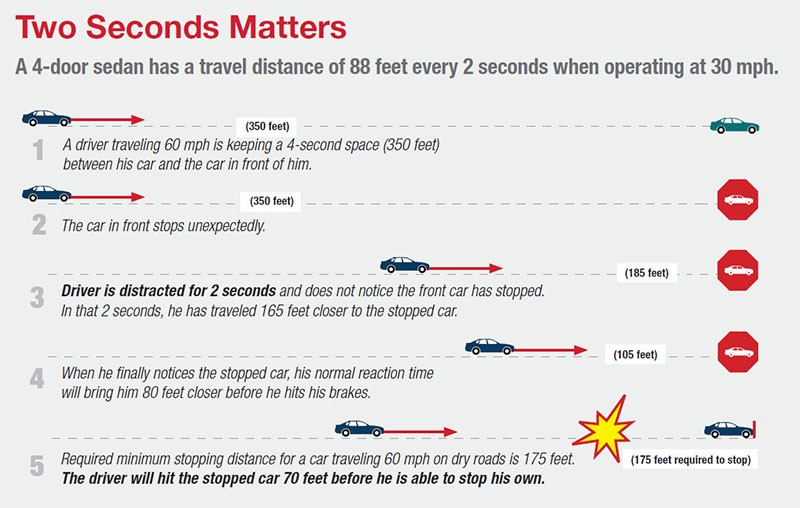Preventing Distracted Driving May Save Lives

Printable pdf: SafeTalk Distracted Driving Prevention ST9 pdf

Distracted driving accidents are on the rise. While overall vehicle accidents are decreasing,
20% of all injury crashes are related to distracted driving.
To minimize the risk to others, drivers must change their behavior when they’re behind the wheel. These are common distractions that drivers must learn to manage safely:
Passenger conversations
Conversations with passengers should be kept to a minimum, especially when driving in the city, in heavy traffic or on an unfamiliar route.
Electrical devices
Any time an electrical device like a cell phone is in use, the vehicle should not be moving. The driver should pull over to a safe location like a parking lot and interact with the device only after the vehicle is stopped.
Eating while driving
One of the most common activities within a vehicle is one of the most dangerous. If you’re hungry, pull over!
Hands-free technology
A hands-free conversation is still a conversation and can be distracting. Keep all conversations to a minimum while driving in the city, heavy traffic or on unfamiliar routes.
Comfort devices
Interacting with anything on the vehicle’s dashboard will take the driver’s eyes off the road. Make sure to adjust the settings on media devices, radio, heat and air conditioning while the car is stationary.
To help mitigate risk, consider implementing a “Safe Driving Agreement” as part of your employee safety program. An example is included in the printable pdf version of this SafeTalk.
We do not warrant that all potential hazards and conditions have been evaluated and identified, or that they are safely controlled. We also do not warrant that our insureds’ workplaces are safe or healthful or that they comply with laws, regulations, codes or standards. The liability of GAI (and/or its affiliated subsidiaries) is limited to the terms, limits, and conditions of the insurance policies that it writes. GAI assumes no liability beyond that provided under the terms, limits, and conditions of the policies it has issued, when engaging in loss control consultation services. The facts of any potential claims situation which may actually arise, and the terms, conditions, exclusions, and limitations in any policy in effect at that time, are unique. Thus, no representation is made that any specific insurance coverage applies. This information provides guidance and is not intended as a legal interpretation of any federal, state or local laws, rules or regulations. ABA Insurance Services Inc. (“ABAIS”) does not warrant that all potential hazards or conditions have been evaluated or can be controlled. The liability of ABAIS and its affiliates is limited to the terms, limits and conditions of the insurance policies issued by ABAIS. © 2023 Great American Insurance Company. All rights reserved. ST09
66e06ecd-f855-4119-b784-193811937ddc.svg?Status=Master&sfvrsn=448913a7_3/
ABAIS-Logo-1-(1)66e06ecd-f855-4119-b784-193811937ddc
.svg)